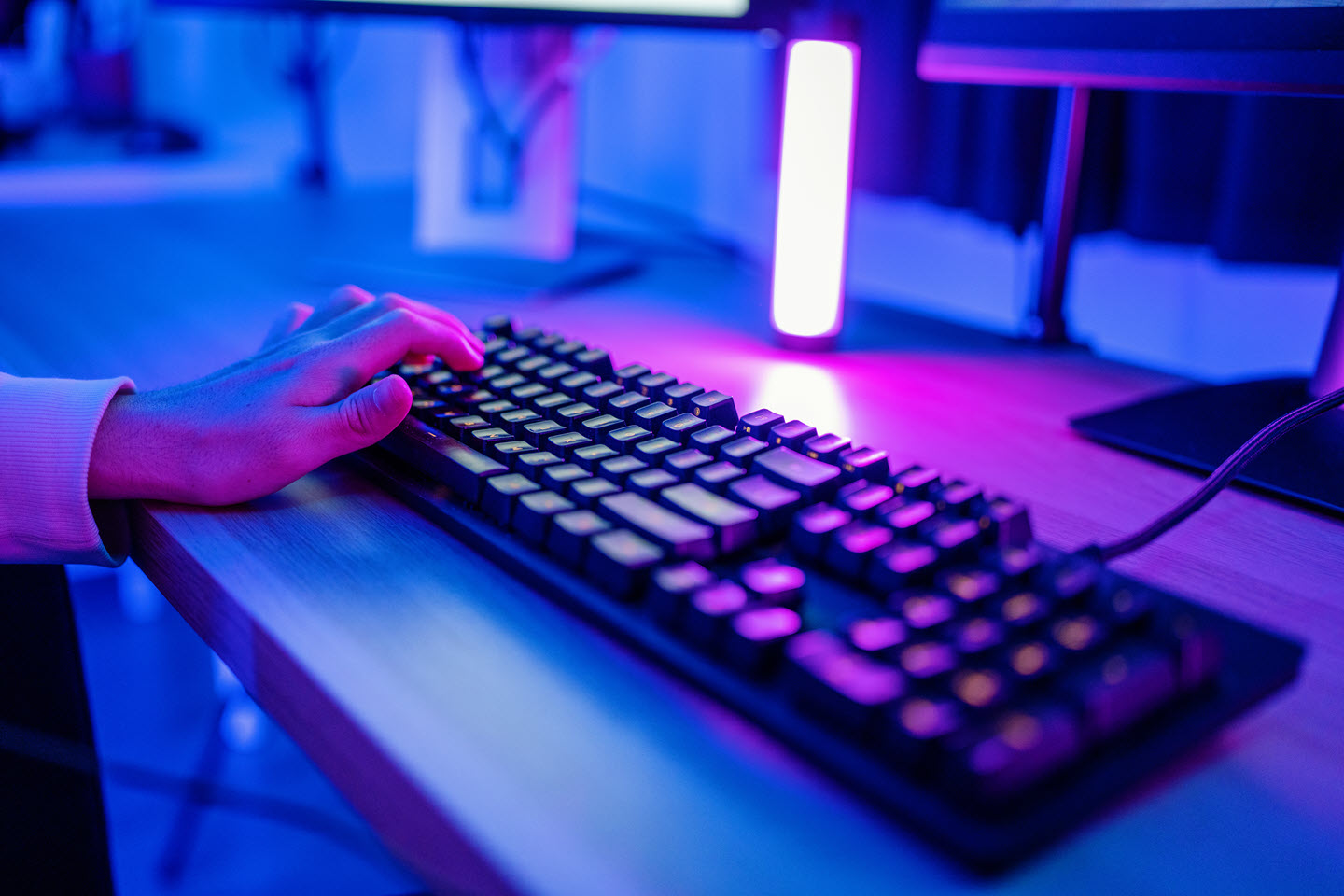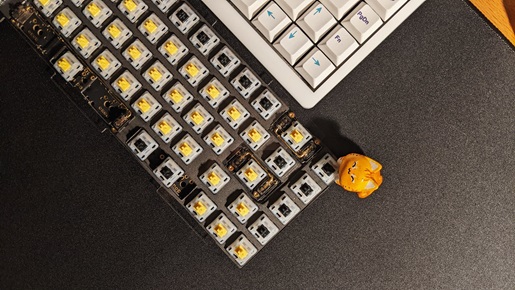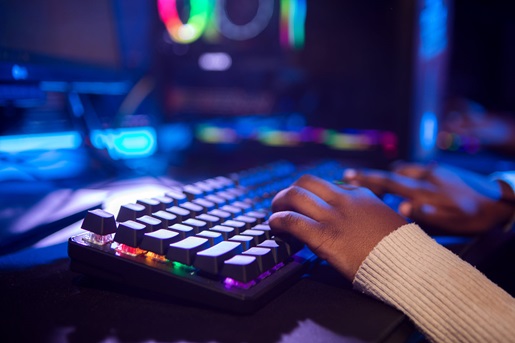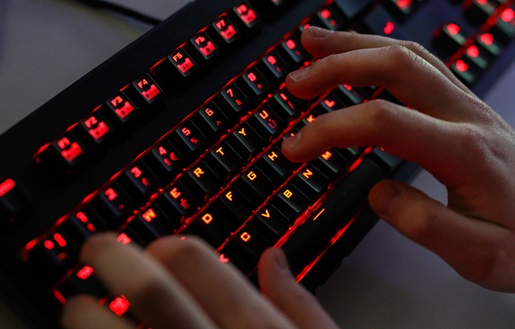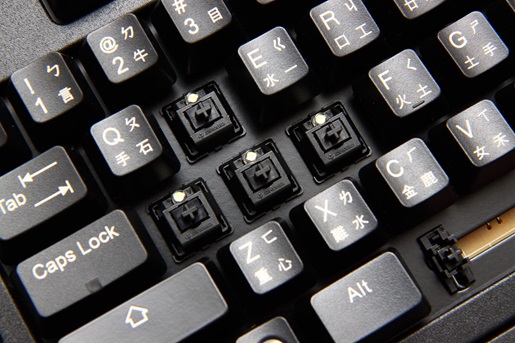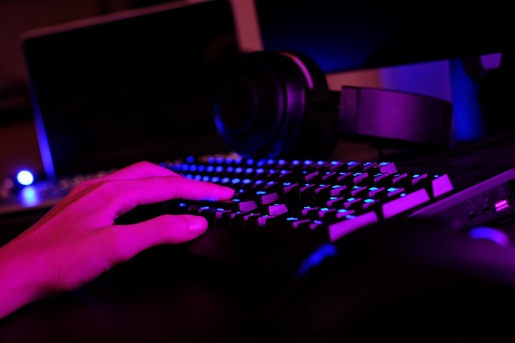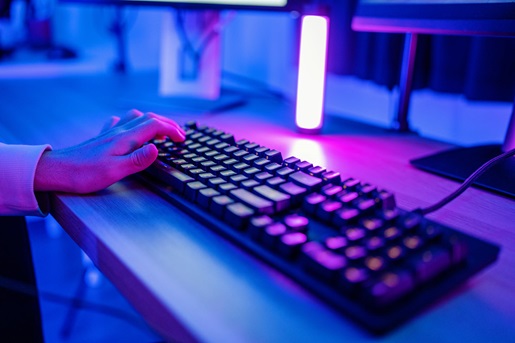Find the best mechanical keyboard switch for you and learn what makes it click (or not click)
If you spend a significant amount of your day pressing keys, whether for business or pleasure, making the process more efficient and satisfying is a compelling reason to get into mechanical keyboards. But what is it about the hobby that so reliably turns newbies who just picked up their first mass-produced board into mega-fans who build their own custom creations? It’s the variety. And that’s what makes picking out the best mechanical keyboard switches overall such a tough undertaking.
It would be a massive disservice to the dozens upon dozens of switches out there, the multitude of ways to lube, film, and otherwise customize them to perfection, and the varied preferences of each individual enthusiast to claim there could ever be an objective list of the best switches for mechanical keyboard diehards. However. If you know you want to pick up a new set of keyboard switches, whether it’s for your first custom build or your hundredth, and you want a rundown of switches often hailed as favorites? That we can help you with.
Check out our comprehensive guide to the world of mechanical keyboard switches.
What makes the best mechanical keyboard switches?
Whether you’re looking for the best mechanical keyboard switch for typing, coding, gaming, or all three, three main aspects will determine how much you’re likely to enjoy them:
- Feel: Forgive us for getting a little philosophical, but when you press a key, you’re establishing direct, physical communication with a digital entity — your computer. How the key feels as you first press it down, whether it includes a tactile “bump” that marks the point where a press is registered, and how sharply it springs back up after each press all change the tenor of that physical-to-digital conversation.
- Sound: You’re probably going to hear these things going up and down thousands of times a day, so it behooves you to enjoy their sound — and to make sure that the people around you at least find them inoffensive. Beyond determining the most quiet mechanical keyboard switches and the loudest mechanical keyboard switches, individual elements of a switch’s design may make it sound deep and resonant, light and airy, or scratchy and pingy.
- Aesthetics: The look of the switch typically isn’t as important as the feel or the sound, because you won’t be seeing a whole lot of them after they’re installed. But low-profile boards may give you a peek at each switch’s housing, transparent keycaps can reveal the mechanisms underneath, and RGB-enabled keyboards only work if each switch is built to let the colorful light show shine through. There are plenty of reasons to consider a switch’s look beyond the simple joy of seeing them arranged in little piles pre-installation (though that’s good too).
Did You Know?:Want to learn more about what makes switches unique? Check out our explainer on the difference between mechanical keyboard switches.
The 5 best mechanical keyboard switches
Now that you know what we’re looking for in the best mechanical keyboard switches, here are our favorites across five of the most prominent categories.
The best piece of living history: Buckling spring
We said these are the best mechanical keyboard switches of all time, and we meant it. The buckling spring switches inside each original IBM Model M keyboard made a heavy and definitive feel and sound, creating a typing experience that many diehards insist is still unmatched. The bad news is that IBM no longer makes these boards, and the design of the switch means it can’t be incorporated into standard mechanical keyboards. The good news is that Unicomp has picked up the torch, and you can find the very same buckling spring tech in its New Model M keyboard, currently going for $104.
The best linear switches: Gazzew Bobagum
Linear switches simply go down, register a keypress at a set point along the trip, and then go back up. No bump or click. This allows for both quiet operation and the fastest possible actuation time — making them the best mechanical keyboard switch for FPS players and other gamers who rely on quick reactions. To put it briefly, few linear switches go down then up as well as Gazzew Bobagum switches. Their smooth feel remains satisfying even with minimal auditory feedback from their near-silent operation, and their lively pink design makes them instantly identifiable just peeking out from under your keycaps. You can pick up a set of 10 for $6.50.
The best clicky switches: Kailh Box Jade
The Kailh Box Jade’s click bar makes two quick chirps on each keypress — one on actuation, and one on return — and the Jades go loud without tipping over into auditory overwhelm. They’re also easier to press than Kailh Box Navy switches, another clicky favorite from the same line, making them friendlier for a range of typists. And yes, the clicks do serve a practical purpose, since they help ensure you didn’t miss an errant keypress even if you aren’t looking where you’re typing (which makes them some of the best keyboard switches for programming, assuming your coworkers don’t mind). Kailh Box Jades are surprisingly affordable too, with a set of 36 available for $12.24, or about $3.40 for every 10 switches.
Did You Know?:If you want to build the perfect keyboard for topping out scoreboards, you should also check out our guide to the best switches for gaming.
The best tactile switches: Holy Panda X
Some odd branding decisions and an ensuing backlash led to Holy Panda X switches not being the most popular mechanical keyboard switch for fans who were invested in the original Holy Panda ethos. Setting their unfortunate introduction aside, it’s clear that a set of Holy Panda X switches will give you some of best tactile typing you can find anywhere. Their large, rounded tactile bump starts nearly at the top and continues almost to the point of bottoming out, making each switch feel like a rhythmic dance partner for your fingertips, and they have a light and leathery actuation sound that (probably) won’t bother the neighbors. You can buy a 35-pack of Holy Panda X switches $35, which works out to a high but fair price of 10-for-$10.
The best non-MX switches: Topre Type-S
Aside from the historical favorite, each of the switches we’ve listed so far has fallen under the same umbrella of MX-style switches, making them broadly compatible with the same kinds of keyboards and keycaps. But that isn’t the limit of the mechanical keyboard hobby. Other switch types provide their own unique feel, sound, and looks, and Topre stands tallest amongst the MX alternatives in the consideration of many hobbyists. Its latest evolution, Topre Type-S, offers the same satisfying feel with a substantially reduced sound, making them ideal to use at home, in the office, or on the road.
Topre Type-S switches are used exclusively in HHKB Professional HYBRID Type-S keyboards, with their practicality and utility making a perfect match for the board’s ease of use and refined design — and for those who prefer a hearty “thock” sound with each press, you can opt for the non-silenced model that uses the same electrocapacitive technology. The whole range of high-end keyboards from HHKB was created for those who type to live. If you’re a demanding typist too, you’ll be glad you gave them a try.

